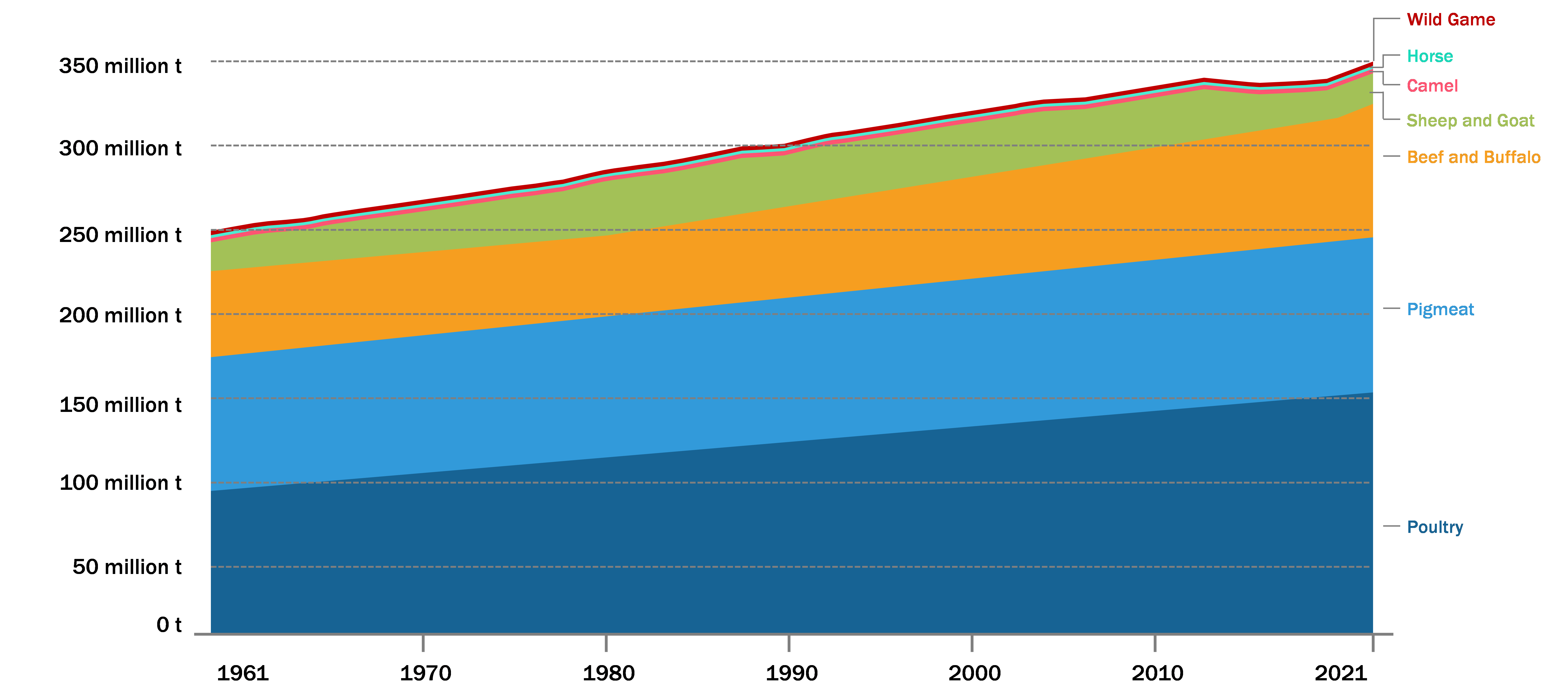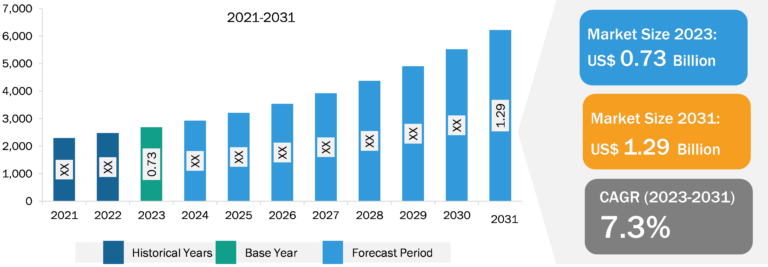
Forage Seeds Market
Forage is a type of plant that dairy producers mainly utilize to feed their cattle. Forage plants come in many different varieties, including alfalfa, chicory, timothy, ryegrass, clover, and bent grass. Forage seed is converted into silage after being preserved and stored. Alfalfa is one of the most popular and highest-yielding perennial forage crops. The forage seeds market is dependent on animal husbandry and livestock demand. The rising demand for animal feed is boosting the demand for forage seeds. The growing per capita meat consumption across the globe is expected to boost the demand for forage seeds during the forecast period.
Increasing Livestock Production Propels Forage Seeds Market Growth
Industrial livestock production has undergone a significant transformation, increasing demand for meat-based products and dairy products. Livestock products account for 16% of energy and 34% of the protein in human diets. Livestock production also accounts for ~19% of the value of food production and 30% of the global value of agriculture. The demand for livestock products is driven by changing lifestyles and food preferences, increasing urbanization, growing income, and the rapidly rising world population. With burgeoning livestock demand, the consumption of protein-rich meat products is surging. According to the Food and Agriculture Organization (FAO), worldwide meat protein consumption is predicted to increase by 14% by 2030. Additionally, world milk production is expected to rise by 1.6% annually between 2020 and 2029 and reach 997 million metric ton in 2029, according to a report by the Organization for Economic Co-operation and Development (OECD) and FAO. Thus, the increasing consumption of livestock products such as meat and increasing milk production has encouraged manufacturers to focus on providing good quality forage crops for feeding livestock.
As shown in the below fig., according to the FAO, the total meat production globally was 235.06 million metric tons in 2001, significantly increased in 2021 to 354.82 million metric tons. Poultry production accounted for a notable growth of 93% from 2001 to 2021.
Global Meat Production by Livestock Type (2001–2021)

Source: Food and Agriculture Organization (FAO) of the United Nations
The growth in livestock production is likely to create a demand for better forage crops, as people are highly concerned about the quality of meat they consume.
Forage Seeds Market: Segmental Overview
Based on type, the forage seeds market is segmented into [alfalfa, clover (white, red, hybrid, and others), ryegrass (annual ryegrass, perennial ryegrass, Italian ryegrass, and hybrid ryegrass), timothy, sorghum, brome, birdsfoot trefoil, cowpea, meadow fescue, and others]. Alfalfa is a perennial crop and a member of the legume family. Depending on the geography and climatic conditions, alfalfa crops can grow ~11 times a year. They often grow up to 3 feet tall, with roots that penetrate more than 15 feet into the earth. Alfalfa is a rich source of phosphorus, potassium, iron, copper, sulfur, manganese, and other micronutrients. It is one of the primary sources of protein and fiber for dairy cows, beef cattle, horses, sheep, and meat rabbits. Benefits of alfalfa include improved reproduction of animals, strengthened bone health, and an increase in weight gain. Alfalfa requires a higher amount of water for its growth.
Based on category, the forage seeds market is segmented into organic and conventional. The conventionalsegment accounted for a larger market share in 2022. Conventional forage seeds are grown using chemical fertilizers, genetically modified organisms (GMOs), and chemical pesticides. Conventional forage seeds provide higher yields than organic ones due to the use of GMOs and chemical fertilizers. Moreover, conventional forage seeds are highly affordable and readily available. However, with rising awareness of the health implications of growth hormones and GMOs, the demand for conventional forage is expected to reduce in the coming years, limiting the market growth for the segment.
Based on livestock, the forage seeds market is segmented into ruminants, poultry, swine, and others. The ruminants segment accounted for the largest share in 2022. Ruminants include cattle, sheep, goats, and buffalo. Forage is the primary source of protein, fiber, and energy for ruminants. Leguminous forages such as alfalfa and clover provide 75% of the crude protein to ruminants. Forage grasses provide high amounts of fiber to the ruminants. Forage also reduces the overall cost of rumen feed. Therefore, livestock breeders usually use forage along with animal feeds. The rising awareness of specific nutrition for ruminants, especially dairy cows, goats and sheep, and beef cattle, is driving the demand for forage, propelling the growth of the forage seeds market.
Impact of COVID-19 Pandemic on Forage Seeds Market
The COVID-19 pandemic affected economies and industries in various countries. Lockdowns, travel bans, and business shutdowns in leading countries in North America, Europe, Asia Pacific (APAC), South & Central America (SAM), and the Middle East & Africa (MEA) negatively affected the growth of various industries, including the agriculture and animal feed industry. The shutdown of manufacturing units disturbed global supply chains, manufacturing activities, delivery schedules, and sales of various essential and nonessential products. Various companies announced possible delays in product deliveries and a slump in future sales of their products in 2020.
Forage Seeds Market: Competitive Landscape and Key Developments
UPL Ltd, DLF Seeds AS, Corteva Inc, Limagrain UK Ltd, S&W Seed Co, Deutsche Saatveredelung AG, Cerience, Allied Seed LLC, MAS Seeds SA, and Syngenta AG are a few leading players operating in the forage seeds market. These players focus on developing innovative products to meet the changing requirements of consumers.







